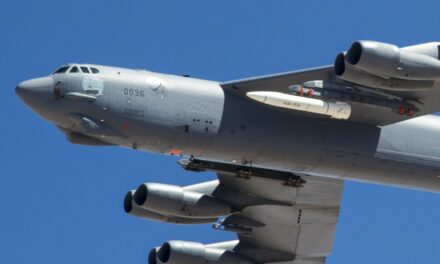We support our Publishers and Content Creators. You can view this story on their website by CLICKING HERE.
An Ohio-class submarine arrived in the U.S. 5th Fleet area of operations on Sunday.
“The submarine’s rapid deployment in the U.S. Central Command area of responsibility demonstrates the flexibility and dynamic ability to deter potential adversaries, reassure partners, enhance maritime security, and ensure freedom of navigation and the free flow of commerce,” the Fleet Forces Command announced.
Though the U.S. Navy did not identify the submarine, it is reported to be one of the four Ohio-class guided missile submarines (SSGNs), former ballistic missile subs (SSBNs) that were converted to fire Tomahawk cruise missiles rather than nuclear-tipped ballistic missiles. Each of the four boats can carry 154 Tomahawk cruise missiles, which is almost four times what the newest attack subs can carry.
Each Tomahawk can carry a high-explosive warhead of up to 1,000 pounds, CNN reported.
Not Exactly the Silent Service This Week
CENTCOM shared a photo of the submarine on X as it transited the Suez Canal northeast of Cairo. The U.S. military rarely announces the movements or operations of its ballistic or guided missile submarines. Such nuclear-powered vessels operate in near-complete secrecy. But the U.S. Navy wants it known that a powerful vessel is in the region. Now that it has completed transit of the Suez Canal, the vessel will be nearly impossible to track.
U.S. Naval Forces Central Command is responsible for approximately 2.5 million square miles of area that envelops the Arabian Gulf, Gulf of Oman, North Arabian Sea, Gulf of Aden, and the Red Sea. Its mission is to conduct maritime security operations, oversee theater security cooperation efforts, and strengthen partner nations’ maritime capabilities to promote security and stability.
Publicizing the Ohio-class submarine’s presence puts Tehran and other potential adversaries on notice. A U.S. submarine is in their region, but they have little chance of figuring out where.
Change of Mission for Ohio-Class Subs
In accordance with the Strategic Arms Reduction Treaty II, which was agreed in June 1992, the number of U.S. Navy strategic missile submarines was limited to 14 beginning in 2002. Four of the 18 boats of the Ohio class, including the lead boat, were converted to conventionally-armed nuclear-powered submarines.
The USS Ohio began the conversion in November 2002 and rejoined the fleet in January 2006 following sea trials. The other converted boats of the class included the USS Michigan (SSGN-727), USS Florida (SSGN-728), and USS Georgia (SSGN-729).
At least one of those subs is now in the Middle East. Given the secret nature of the “Silent Service,” there could be more.
What is the Sub’s Current Mission?
An Ohio-class guided missile submarine packs a lot of punch, but as the Telegraph also noted, SSGNs have extra accommodations that allow them to carry 60-plus special forces operators for sustained periods, and more than 100 for shorter durations. Those warfighters could include U.S. Navy SEALs or U.S. Marine Corps MARSOC teams.
“Sending it through the Canal, however, suggests an urgent requirement,” wrote Lewis Page, a former Royal Navy diving officer. “And given that the submarine’s transit through Suez would inevitably become known to hostile intelligence services, it makes sense to announce it to the world if only for morale effect,” while he added, “If I were a member of the Houthi rebel movement, perhaps engaged in launching missiles and drones at Israel, I would be reluctant to hang about anywhere near the sea right now.”
Author Experience and Expertise
A Senior Editor for 19FortyFive, Peter Suciu is a Michigan-based writer. He has contributed to more than four dozen magazines, newspapers, and websites with over 3,200 published pieces over a twenty-year career in journalism. He regularly writes about military hardware, firearms history, cybersecurity, politics, and international affairs. Peter is also a Contributing Writer for Forbes and Clearance Jobs. You can follow him on Twitter: @PeterSuciu.

 Conservative
Conservative  Search
Search Trending
Trending Current News
Current News 





